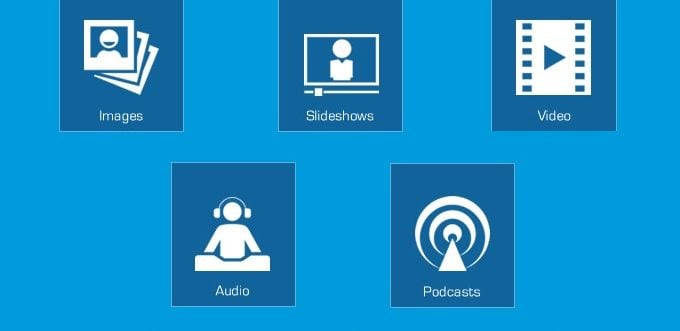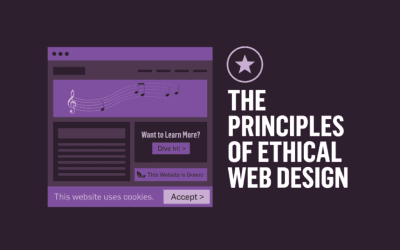In the digital age, the visual appeal of a website is paramount. The use of images and multimedia in web design can make or break the user experience. Incorporating multimedia elements such as videos, animations, and interactive graphics can elevate a website’s design, making it more engaging and memorable for users. This article delves into the importance of using images and multimedia in web design, its advantages, and potential pitfalls to avoid.
This article aims to answer the following questions:
What is the importance of multimedia in web design as discussed in essays?
Where can I find a “multimedia and web design” PDF?
What are the key features of multimedia website design?
Can you provide some multimedia website examples?
Are there any courses on multimedia and web design?
How would you design a multimedia web-based computer application if working in groups?
What are the disadvantages of multimedia?
How can I utilize or navigate Google Sites for multimedia integration?
Key Takeaways:
- Multimedia enhances user engagement and retention.
- Proper use of images can boost a site’s aesthetics and usability.
- Over-reliance on multimedia can hamper site performance.
Types of Multimedia Elements

There are various multimedia elements that designers can integrate into a website:
- Images: Photos, infographics, and illustrations.
- Videos: Tutorials, testimonials, and promotional clips.
- Animations: Animated graphics or texts that add a dynamic touch.
- Interactive Elements: Quizzes, polls, and interactive infographics.
Multimedia on the Web: Examples
One of the best ways to understand the impact of multimedia is to see it in action. Websites like W3Schools offer tutorials and examples that showcase the power of multimedia in web design. Another great resource is the YouTube video on multimedia design basics for educators.
Best Practices for Using Images and Multimedia
Optimizing Images for Web
Using high-quality images is crucial, but it’s equally important to ensure they’re optimized for the web. Large image files can slow down a website, leading to a poor user experience. Tools like Photoshop or online image compressors can help reduce file sizes without compromising quality.
Responsive Design
With the rise of mobile devices, it’s essential to ensure multimedia elements are responsive. This means they should adapt to different screen sizes and orientations, providing a seamless experience across devices.
Accessibility
Ensure all multimedia elements are accessible to all users, including those with disabilities. This can be achieved by providing alt text for images, subtitles for videos, and ensuring interactive elements can be navigated using keyboard commands.
The Role of Graphics in Multimedia

Graphics play a pivotal role in multimedia web design. They can:
- Enhance Understanding: Infographics can break down complex data into understandable visuals.
- Boost Engagement: Interactive graphics can encourage users to engage with the content.
- Improve Aesthetics: Well-designed graphics can elevate the overall look and feel of a website.
Courses and Learning Resources
For those interested in diving deeper into multimedia web design, there are numerous courses available. Websites like New Perspective Design offer insights into gathering content for web design, including the use of multimedia. Additionally, platforms like W3Schools provide comprehensive tutorials on “Using images and multimedia in web design w3schools.”
The Double-Edged Sword: Disadvantages of Multimedia
While multimedia can enhance a website, it’s not without its drawbacks:
- Slower Load Times: Overloading a site with multimedia can lead to longer load times, which can deter users.
- Overwhelming Users: Too many multimedia elements can overwhelm users, making the site difficult to navigate.
- Compatibility Issues: Not all multimedia formats are compatible with every browser or device.

In Groups: Designing a Multimedia Web-Based Application
When tasked with designing a multimedia web-based application, it’s beneficial to work in groups. Collaborative brainstorming can lead to innovative ideas and solutions. Consider the following steps:
- Identify the Target Audience: Understand who the application is for and tailor the multimedia elements accordingly.
- Storyboarding: Plan out the user journey, deciding where and how to incorporate multimedia.
- Prototyping: Create a mockup of the application, testing the placement and functionality of multimedia elements.
- Feedback: Gather feedback from potential users and refine the design accordingly.
Tables: A Snapshot of Multimedia Web Design
| Feature | Benefits | Potential Drawbacks |
|---|---|---|
| Images | Enhances visual appeal | Can slow down site if not optimized |
| Videos | Engages users; can explain complex topics | Requires more bandwidth; not always mobile-friendly |
| Animations | Adds dynamism to site | Can be distracting if overused |
The Essence of Multimedia Embedding
Embedding multimedia is more than just adding a video or image to a webpage. It’s about integrating these elements seamlessly into the design, ensuring they serve a purpose, and enhancing the user’s experience. According to MDN’s guide on Multimedia and embedding, the web would be quite dull if it relied solely on text. Multimedia brings the web to life, making content more engaging and interactive.
Images in HTML: Beyond the Basics
While we’ve discussed the importance of images in the previous section, it’s worth noting that there’s more to embedding images than just using the <img> tag. Images can be annotated with captions using the <figure> element, providing context and additional information. Furthermore, images can be used as CSS background elements, offering more design flexibility.
Video and Audio: The Dynamic Duo
The HTML <video> and <audio> elements have revolutionized how we embed multimedia. These elements allow for the inclusion of multiple file formats, ensuring compatibility across different browsers. Additionally, they support features like captions and subtitles, making content more accessible. It’s crucial to provide fallbacks for older browsers that might not support these elements.
From <object> to <iframe>: Diverse Embedding Technologies
Beyond images, videos, and audio, there are other embedding technologies worth exploring. The <iframe>, <embed>, and <object> elements allow for a wide variety of content to be embedded, from entire web pages to external resources like PDF files. For instance, an <iframe> can be used to embed another webpage within a site, providing a seamless browsing experience.
Vector Graphics: Crisp and Scalable
Vector graphics, especially in the SVG format, are a boon for web designers. Unlike traditional image formats like PNG or JPG, vector graphics don’t pixelate when zoomed in. They remain sharp and clear, regardless of the scale. This makes them ideal for logos, icons, and other design elements that need to look crisp at any size.
Responsive Images: Adapting to the Device
In today’s multi-device world, it’s not enough for images to look good on a desktop. They need to adapt to various screen sizes, from smartphones to tablets. Responsive images ensure that the best possible image is delivered based on the device’s capabilities, improving performance and user experience.
Embedding External Content
Incorporating External Media
External media, such as videos from platforms like YouTube, can be easily embedded into web pages. However, it’s essential to ensure that the content is relevant, adds value, and doesn’t infringe on any copyrights.
Linking to Relevant Resources
Linking to external resources can provide additional information and context to users. For instance, articles from W3Schools or insights from Nielsen Norman Group can offer deeper dives into specific topics related to multimedia web design.
Frequently Asked Questions (FAQs)
1. Why is multimedia important in web design?
Multimedia elements, such as images, videos, and animations, enhance the visual appeal and interactivity of a website. They can make content more engaging, improve user retention, and convey information more effectively than text alone.
2. How can I ensure my multimedia elements are accessible to all users?
To ensure accessibility:
- Provide alt text for images.
- Offer subtitles or captions for videos.
- Ensure interactive elements can be navigated using keyboard commands.
- Use ARIA (Accessible Rich Internet Applications) roles and attributes where necessary.
3. Are there any drawbacks to using too much multimedia on a website?
Yes, overloading a site with multimedia can lead to:
- Slower load times, which can deter users.
- Overwhelming users with too much content or interactivity.
- Potential compatibility issues across different browsers or devices.
4. What are responsive images, and why are they important?
Responsive images adapt to different screen sizes and resolutions. They ensure that the best possible image is delivered based on the device’s capabilities, improving both performance and user experience, especially on mobile devices.
5. How can I embed external videos, such as those from YouTube, into my website?
Most video platforms, like YouTube, provide an “Embed” option. This option gives you an <iframe> code snippet that you can copy and paste into your website’s HTML where you want the video to appear.
6. What are vector graphics, and how are they different from regular images?
Vector graphics are created using paths, points, and curves. Unlike regular raster images (like PNGs or JPGs) that can pixelate when zoomed in, vector graphics remain sharp and clear at any scale. They are ideal for logos, icons, and other design elements.
7. How can I ensure my multimedia content is optimized for web performance?
To optimize multimedia for web performance:
- Compress images without compromising quality.
- Use appropriate file formats (e.g., WebP for images).
- Limit the use of auto-playing multimedia elements.
- Implement lazy loading for images and videos.













